A Homemade Fence Wire Wrapping Tool
Russ Chastain 02.28.18
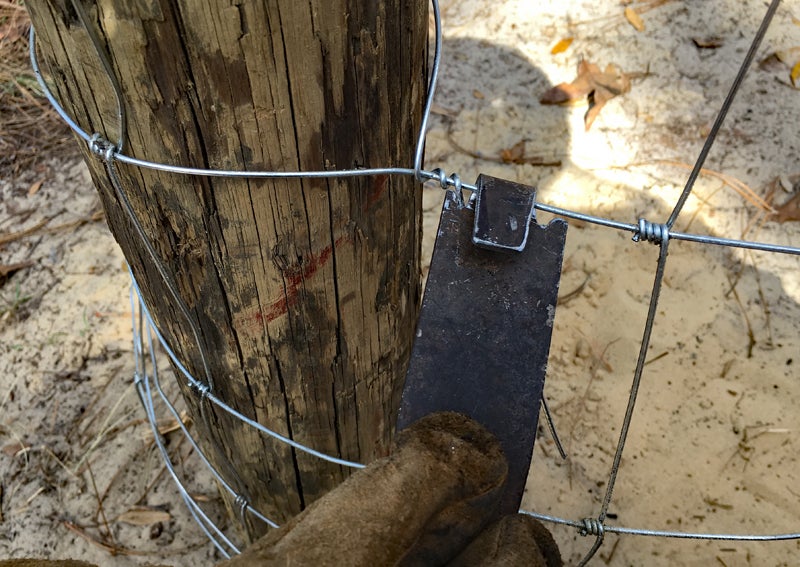
When I needed to erect a wire fence, I started looking into how to build braces, corners, etc. And when watching videos from fence wire manufacturers, I noted that the way they recommend starting and stopping is to wrap each horizontal wire around the post and then wrap it around itself a number of times. This is clearly a lot stronger than just stapling it, so I decided to do it that way. I also wanted to splice the fencing in the same way.
But when I looked for one of the small wrapping tools in the video, I didn’t find one in local stores. So I decided to make my own. After all, it’s a pretty simple tool.
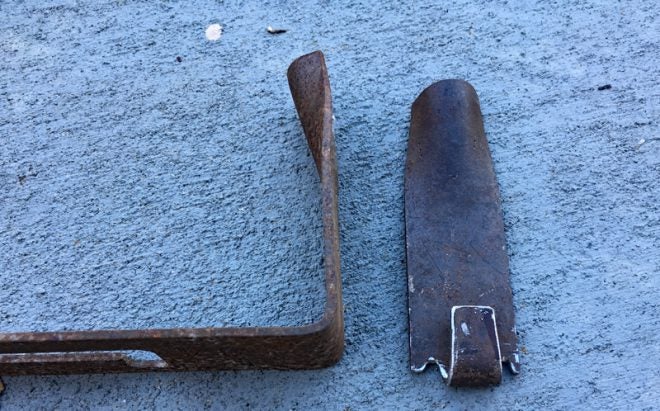
I keep some old steel lying around for just such an occasion, and I happened to have two identical pieces left over from a previous project. My tool is shown here, along with the other piece, showing what I started with. As you can see, I simply cut off the piece with the notch (the left-hand side of the larger piece in the photo above).
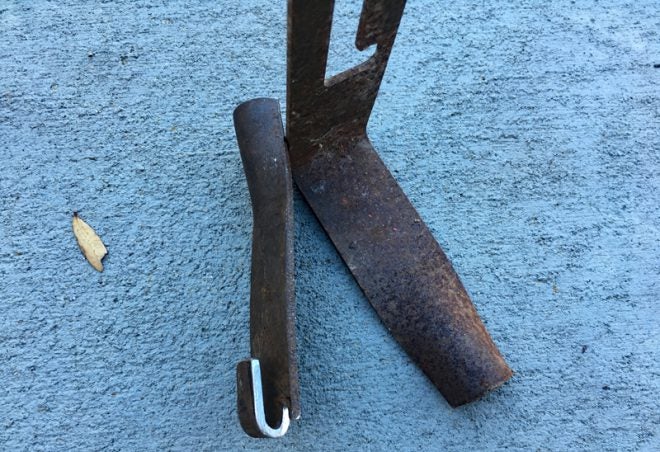
These are the ends of a piece of steel from a trundle bed frame that I found in the trash years ago.
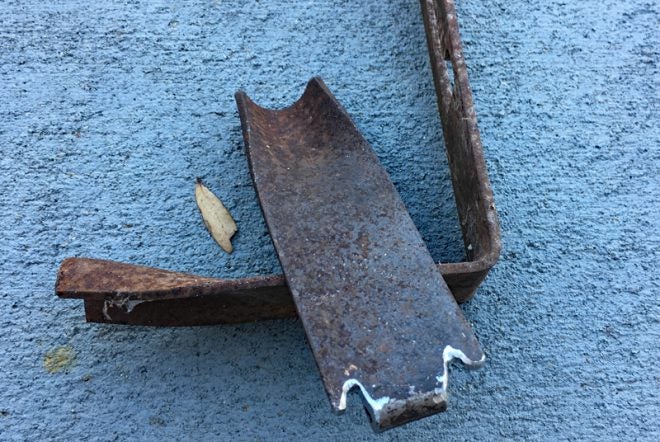
I used a bench vise, a hammer, an angle grinder with a cutoff wheel, and a couple files to shape this tool. I compared it to the diameter of my fence wire, and made one notch a little deeper and wider than the other for wrapping the heavier wires at the top and bottom of the hogwire fencing.
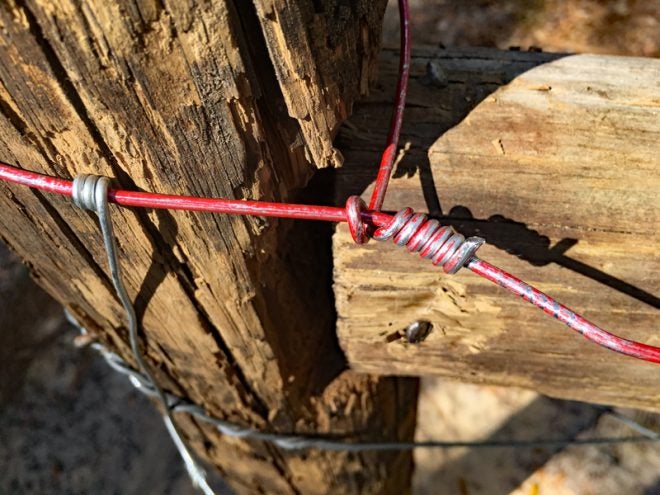
This is the first wrap I did with the new tool. Not the greatest, but plenty strong and a lot better than I could do with just pliers.
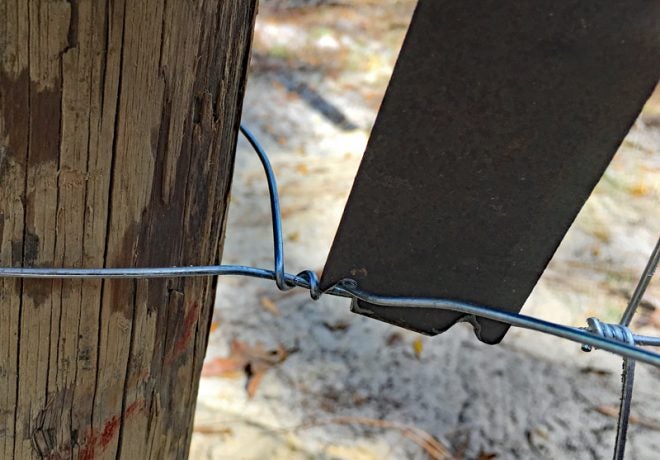
So you start the wrap by hand, and then engage the wire with the tool like so. The horizontal wire rides inside the bend while the wire you’re wrapping around it gets pushed around via the notch in the tool.
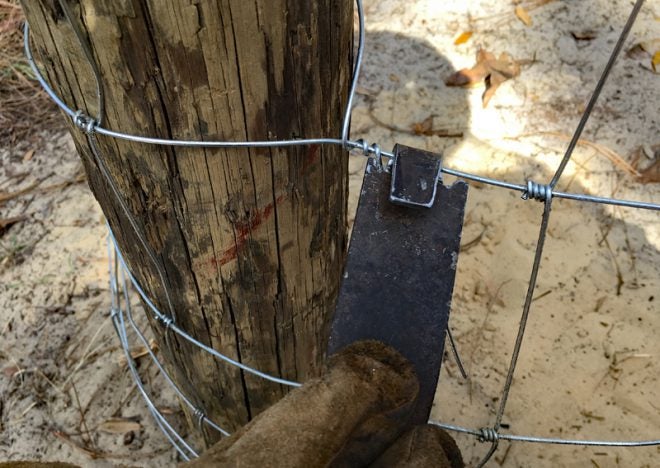
Spin the tool around the horizontal wire, and it wraps the wire as you go. This is one of my first wraps, and it’s pretty sloppy. You can do better with just a little attention to detail. Keeping the working end of the wire perpendicular to the horizontal wire helps tighten the coil.
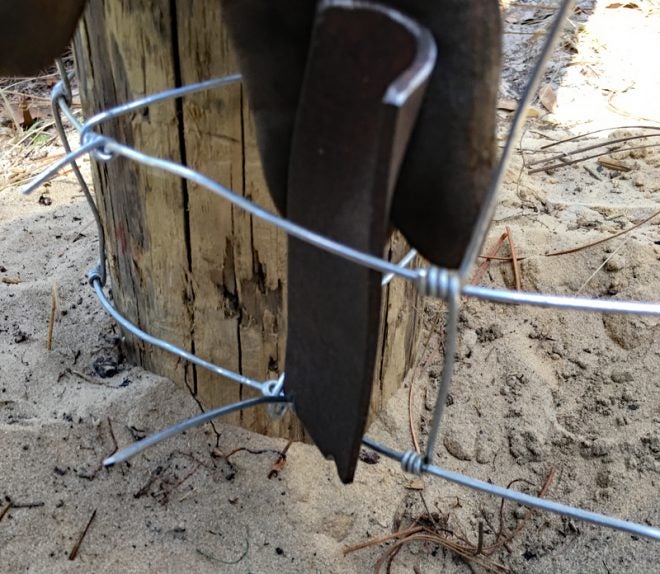
When I got to the bottom of the fence, I found that my tool was too long, due to the horizontal wires being closer together. Doh! But I enjoyed the leverage of the longer length for wrapping wires on the top 2/3 of the fence, so I didn’t want to cut it off. What to do?
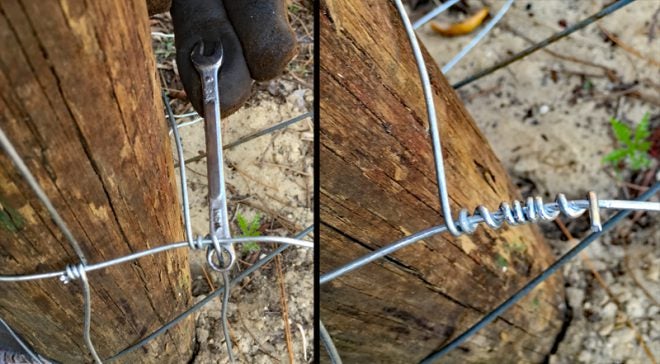
I had some inspiration, and headed for the toolbox. This is the smallest boxed-end wrench I could find, and it does a decent job on the lower 4 wires of this particular fencing. It doesn’t produce as tight a wrap as the special tool, though.
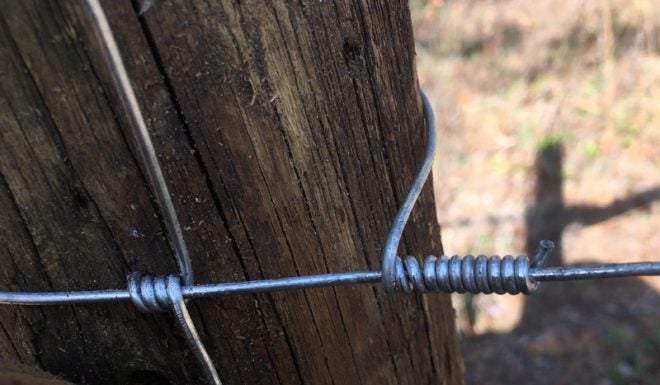
With some practice, my homemade tool can turn out a pretty good wrap. But if I had it to do over again, I wouldn’t cut the side notches quite as deep… and I’d be tempted to make a shorter tool for the bottom end of the fencing.
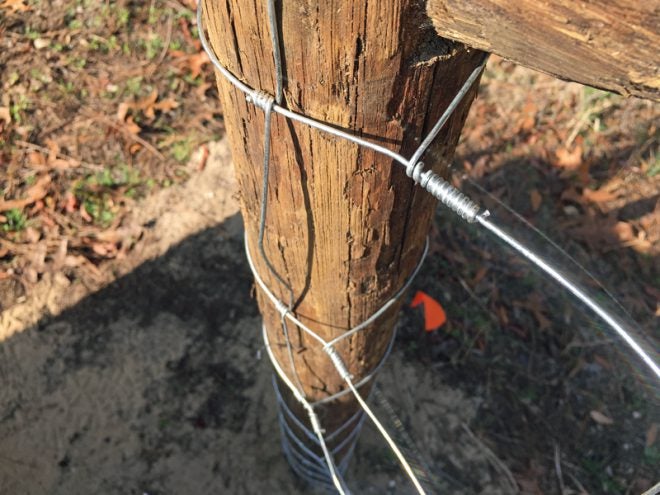
This fence wire will never pull loose from the end post.
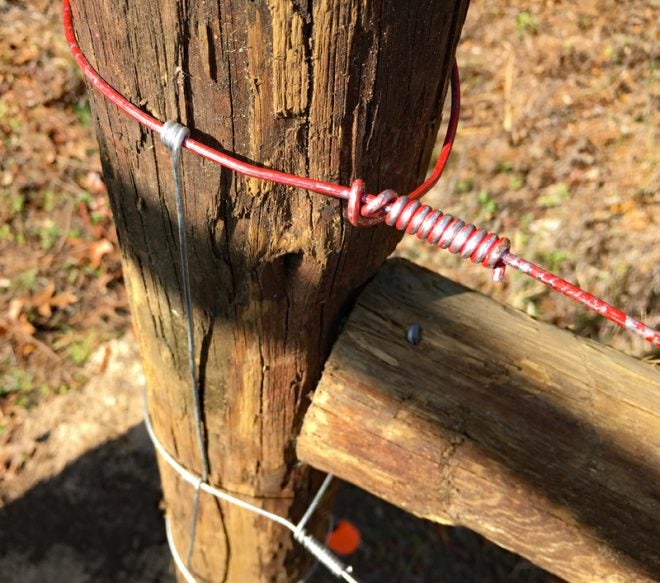
The heavy top wire is tougher to get started, but this wrap will do. Note that these last 3 photos were taken before the wire was stretched.
I hope this helps you with your wire fencing projects.